Today I want to talk to you about the art installation Divina! Dante's Avatar.
Divina! is an artistic installation designed and created by the University of Pisa – D.I.C.I. – Astro Laboratory, under the artistic direction of Foll.ia Lab. It is a cycle of events on the occasion of the celebrations of the seven hundred years since the death of Dante Alighieri.
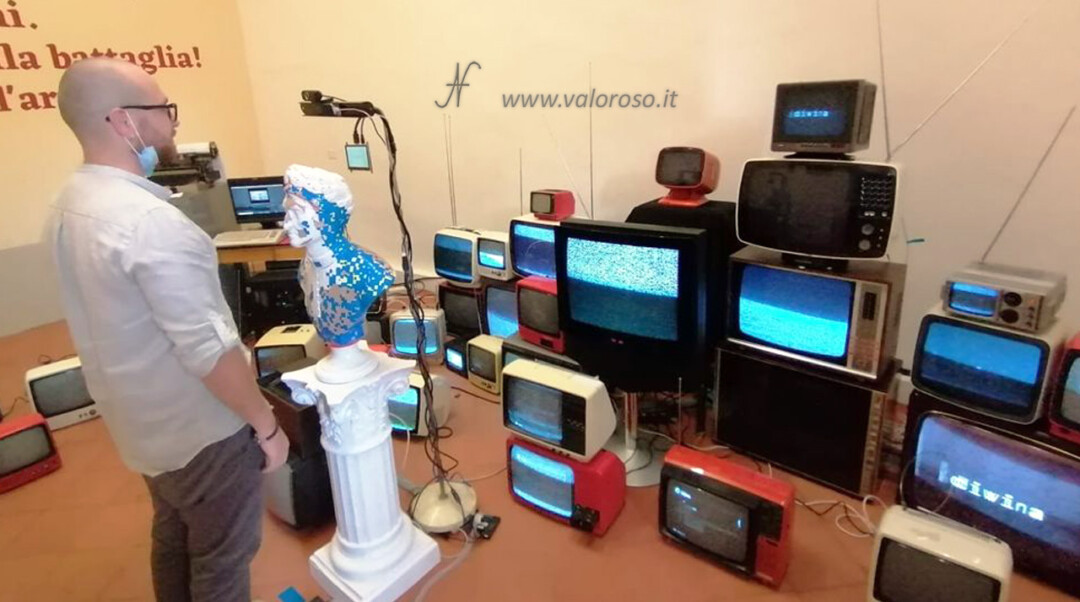
Why am I telling you about it?
1) Because there is a Commodore 64.
2) Because I had the privilege of being part of it!
But let's go step by step.
The artistic idea
As explained by Marco Cisaria, artistic director of Divina!, Dante Alighieri's Divine Comedy does not exist in its original form, having been produced before the invention of printing: it was handwritten.
Of all the manuscripts that have come down to us today, no two versions are the same. The cases of diversification are many and vary from simple spelling changes, to complete distortions of the text.
The art installation Divina! it was inspired by the dynamism of the Divine Comedy and the spread of the work that had it in the world, remaining always current. Divina! it replicates the way in which the Divine Comedy has spread, from voice to voice from hand to hand, transforming itself into a statuary, dynamic and interactive work.
How does work Divina!
Exact: How does that work? Because Divina! is a high-tech art installation!
The viewer approaches the statue of Dante and presses a pedal button.
Through facial recognition, an electronic system encodes his face and selects three lines of three canticles within the Divine Comedy.
The triplet thus formed, personalized for the viewer, is printed by an 80-year-old teletypewriter.
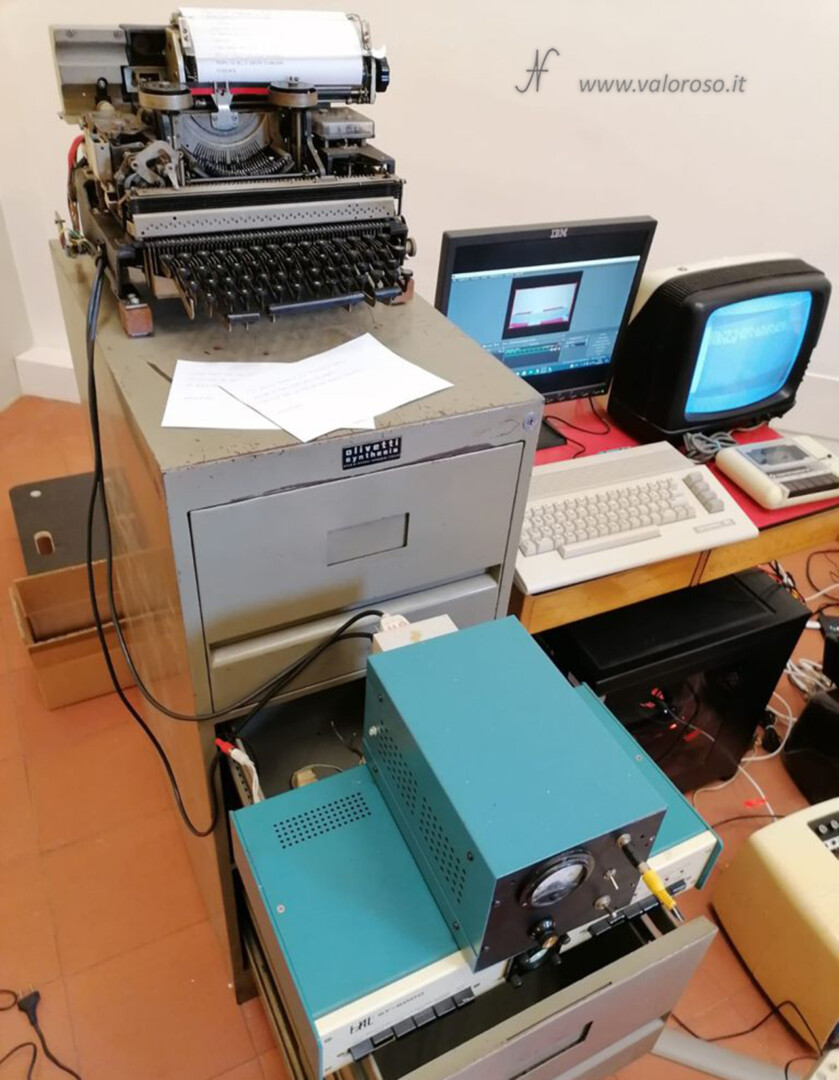
The viewer can admire their personal triplet even on the monitor of a Commodore 64!
Finally, a printer allows the viewer to take their personal triplet with them. The triplet is accompanied by a code, which allows the viewer to know from which songs the endecasillabi that make up the triplet were selected.
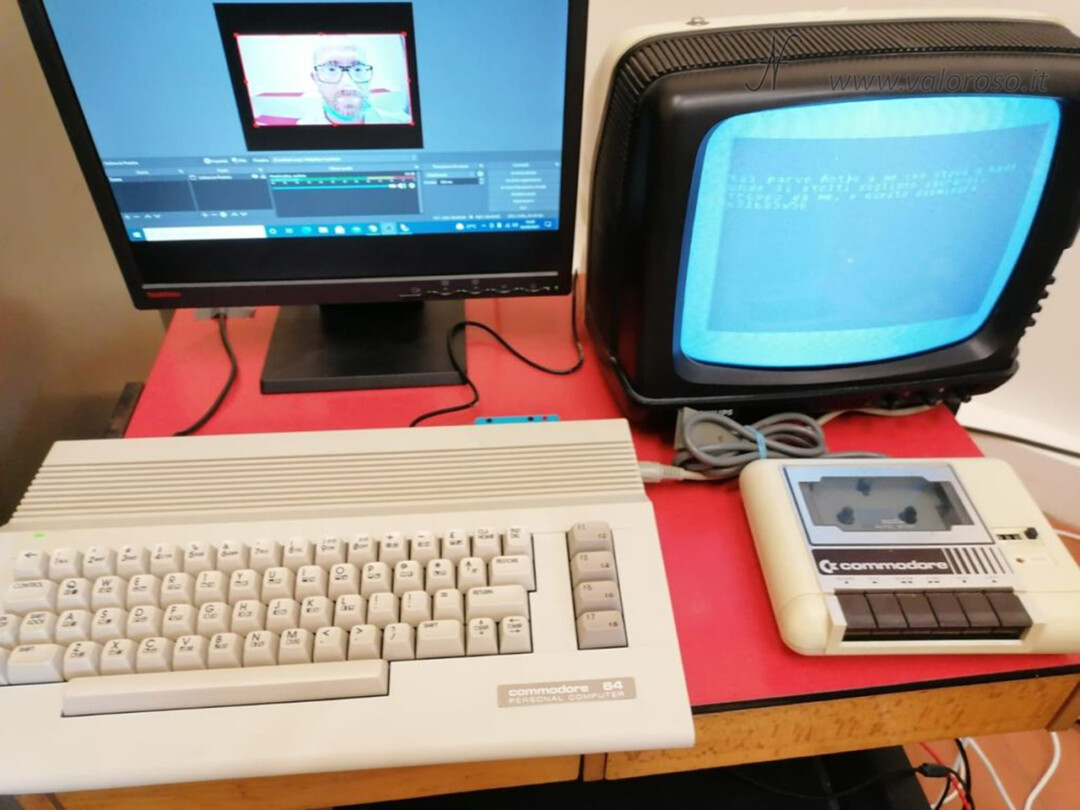
How I participated in the project
Here comes the beauty! Why did a team made up of such important people from the University of Pisa need me?
Honestly, I still haven't figured it out, though I'll explain exactly what I made for them.
Initially, I was contacted on the contact page of this website by Marco Cisaria, artistic director of the project. The message contained three elements that intrigued me a lot:
- The project was inherent in Dante Alighieri's Divine Comedy, which I have always appreciated.
- My advice was required for the interaction between facial acquisition software (modern element), with a teletypewriter and other vintage hardware.
- The project was imminent! Little time available, few words, many deeds!
I immediately accepted. Apart from the teletypewriter, which was already part of the project, I had the right to choose which vintage hardware to use to display the triplet generated by the facial acquisition software.
My choice was immediately clear: Divina! he would have visualized the triplet of the Divine Comedy... on the Commodore 64!
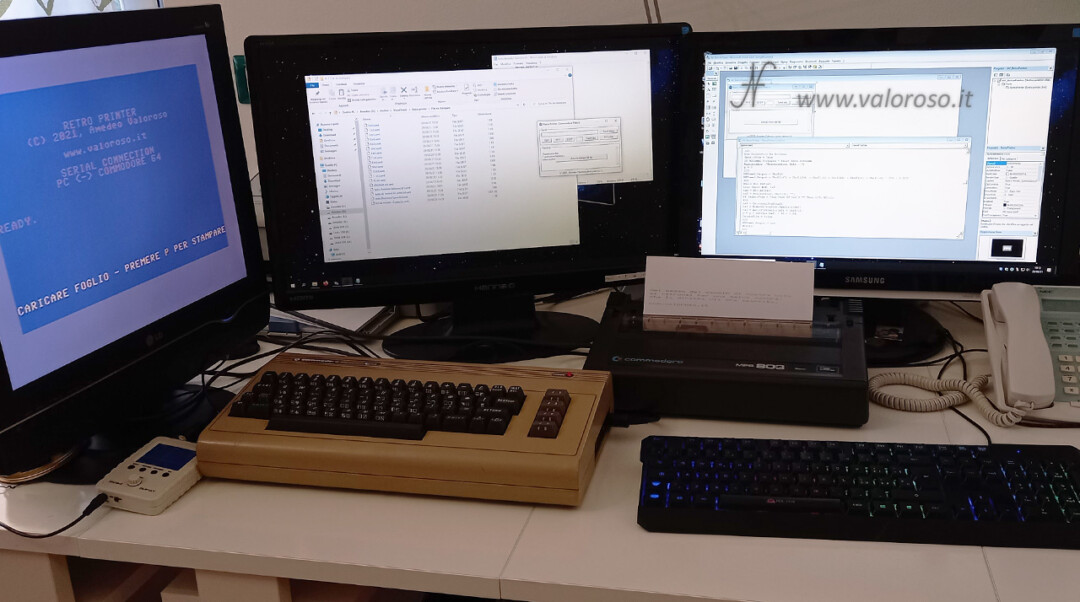
My project consists of three elements: one hardware and two software.
As a hardware, I made a USB cable that, on the one hand, connects to the PC where the facial recognition software resides. On the other hand, it connects to the User Port of the Commodore 64.
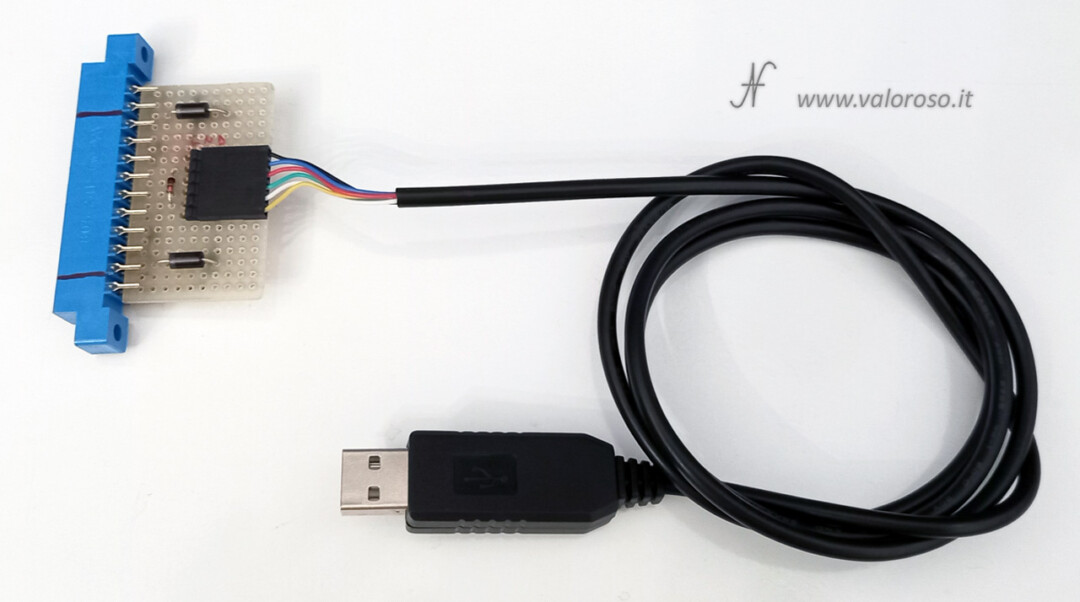
The first software, in Basic for the Commodore 64, I called it Retro Printer Client. It receives serial data from the User Port and writes it to the monitor. In addition, this software provides additional functions for a possible printing of the triplet on a Commodore MPS803 printer.

The second software I made, installed on the PC where the facial recognition sensor also resides, is called Retro Printer. This software takes care of receiving, at the input, the triplet generated by the facial recognition software. Once the triplet has been received, Retro Printer takes care of directing it to several destinations:
- Towards the software MixW, which transmits the data to the Teletypewriter in audio format, according to the TTY (TeleTYpewriter) protocol. To interface with MixW, my software Retro Printer sends data by simulating keystrokes on the keyboard.
- Towards the Commodore 64, via the USB cable that I described before. The Commodore 64 displays the triplet on the monitor. The Commodore 64 has a different character set (PETSCII) than PCs (ASCII): my software Retro Printer he takes care of converting it.
- Towards a printer, which allows the viewer to be able to keep their personalized triplet.
All these operations are managed by my software Retro Printer fully automatically. In addition to this, the software must correctly manage all the timing and priorities, to avoid the overlapping of data that could block the various prints, especially the printing on the teletypewriter, which is rather slow.
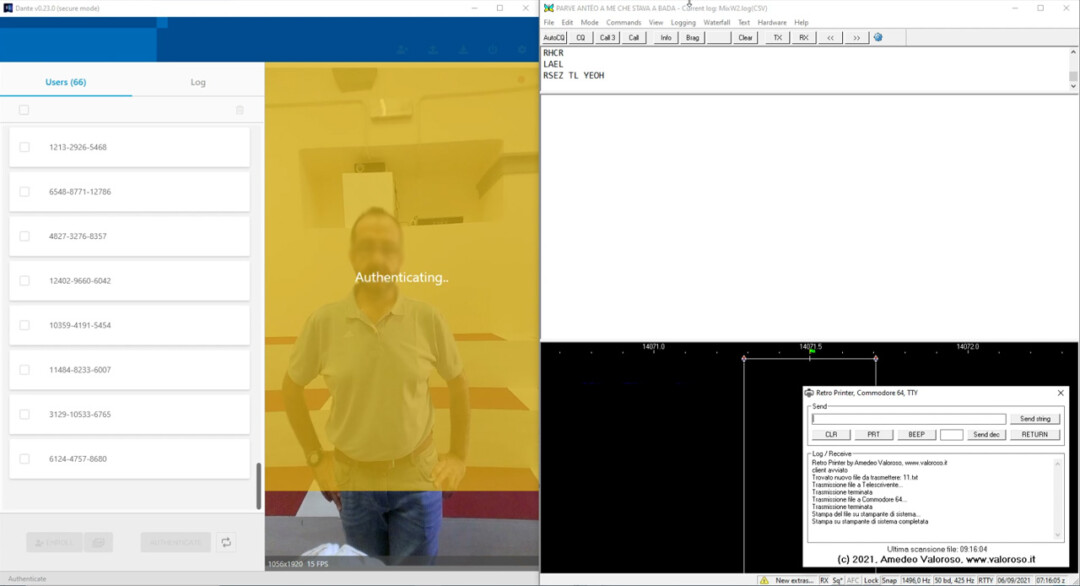
Who took part in the project Divina!
Artistic Direction of Divina!:
Marco Ci – Foll.ia Lab
Miki Bi – Foll.ia Lab
Artistic matrix:
Blue PXLs
Technological Development and Facial Recognition Software:
Prof. Andrea Piemonte – ASTRO UNIPI LABORATORY / ACAS3D
Prof. Gabriella Caroti – ASTRO UNIPI LABORATORY / ACAS3D
Eng. Federico Capriuoli – ACAS3D Digital Solutions Spinoff University of Pisa
Marco Guzzo
Luca Rossi
Scientific Advice, Dante and co.:
Prof. Giuseppe Patota
Code translators:
Amedeo Valoroso (for the C64 and various dialogues)
Luca Bronzi (code iz6hpj)
Matteo Ghieri
Silvano Manente (for cables and co.)
Who put his face on it:
recuperando.it and the Frilli family
Paola Consani
With the collaboration of:
Municipalities of Arezzo, Lucca, Massa
University of Pisa
Thermal baths of Montecatini
Dates and appointments of the first series of events
From 3 September 2021, 3.00 pm, until 9 September
Arezzo, Palazzo dei Priori, Piazza della Libertà 1
From 11 September 2021, 5.00 pm, until 14 September
Pisa, Aula Magna Nuova, Palazzo della Sapienza, via Curtatone and Montanara 15
From 18 September 2021, 10.30 am, until 23 September
Montecatini Terme (PT), Historic hall Terme Excelsior, viale Verdi 61
From 25 September 2021, 12.00 pm, until 30 September
Lucca, former Casa del Boia, via dei Bacchettoni snc
From 2 October 2021, 11.00 a.m., until 9 October
Massa, Malaspina Castle, via del Forte 15